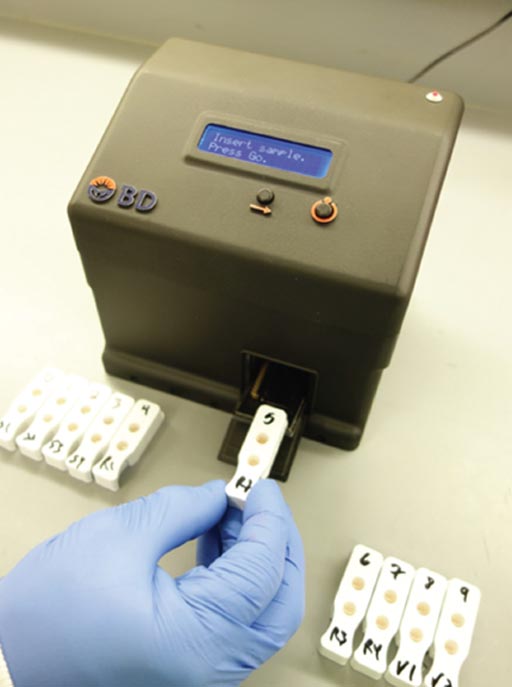Rapid Assay Monitors Influenza Virus Susceptibility
By LabMedica International staff writers
Posted on 17 May 2017
Early detection of drug-resistant influenza viruses is needed for timely modification of policies and recommendations on the use of antivirals. In many countries, neuraminidase (NA) inhibitor(s) are the medications of choice for treatment and prophylaxis of influenza infections, with oseltamivir being most commonly prescribed.Posted on 17 May 2017
There have been reports of locally transmitted oseltamivir-resistant A(H1N1)pdm09 viruses harboring the NA amino acid (AA) substitution H275Y, the marker of clinically relevant resistance to oseltamivir. Several genotypic methods including pyrosequencing have been implemented by surveillance laboratories to screen clinical specimens for the presence of H275Y.

Image: The prototype device and kit for the influenza Antiviral Resistance Test (iART) (Photo courtesy of Becton Dickinson).
Scientists at the Centers for Disease Control and Prevention and their international colleagues used a new rapid assay for detecting oseltamivir resistance in influenza virus, iART, to test 149 clinical specimens. The iART utilizes an advanced enzyme substrate that enables measurement of NA activity in virus isolates and in clinical specimens. Unlike the substrate used in the bioluminescence-based assay, the substrate used in iART is specific to influenza NA, making it more suitable for testing clinical specimens that may contain other pathogens.
The rapid prototype iART assay was developed by Becton Dickinson and the results were obtained for 132 specimens, with iART indicating 41 as “resistant.” For these, sequence analysis found known and suspected markers of oseltamivir resistance, while no such markers were detected for the remaining 91 samples. Viruses isolated from the 41 specimens showed reduced or highly reduced inhibition by neuraminidase inhibition assay.
The authors concluded that their data showed that the iART assay can become a valuable tool for surveillance laboratories. The assay offers a fast mean for detecting viruses displaying reduced inhibition/highly RI (RI/HRI) against oseltamivir in either isolates or clinical specimens. It is a simple approach where signal measurement, data analysis and interpretation are done by a compact portable device. The study was published on May 4, 2017, in the journal Eurosurveillance.













